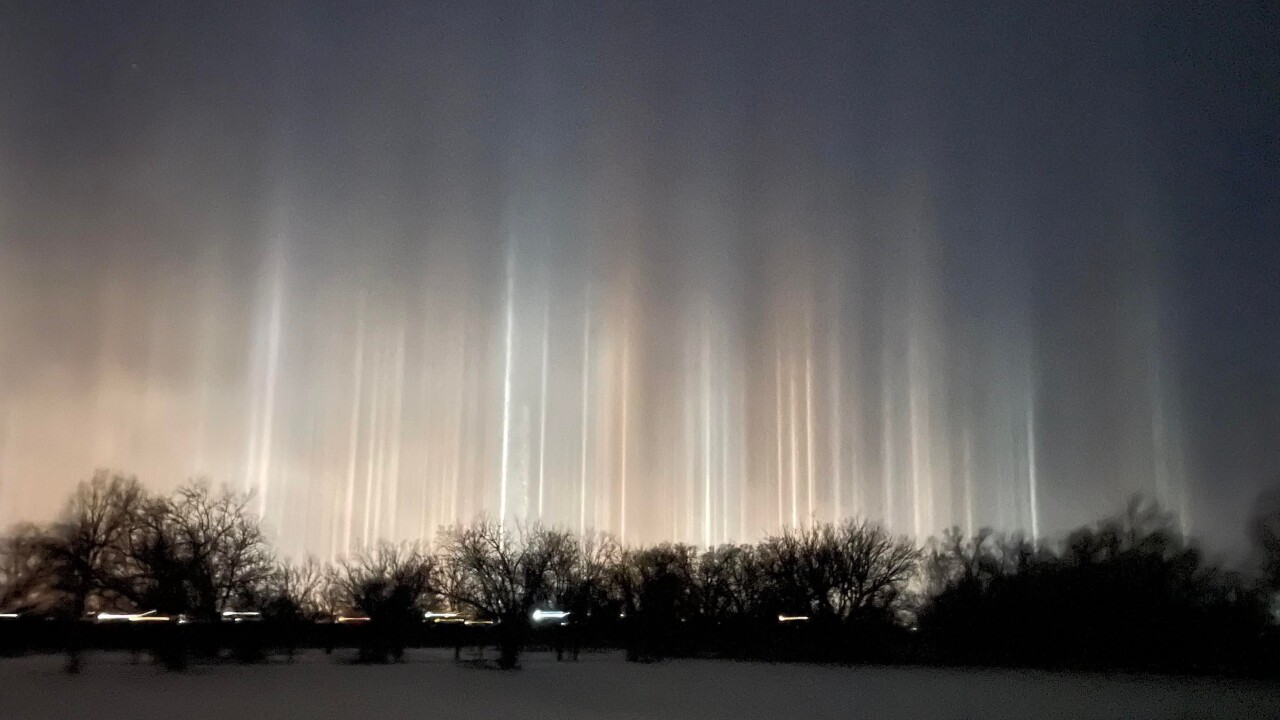Light pillars are optical atmospheric phenomena where pillars of light appear to beam up from the ground into the sky.

The ideal weather conditions for this to occur are on a frigid winter night (often subzero temperatures) with high humidity and little to no wind.

Under these conditions, tiny (about 0.02 mm) ice crystals will form and remain suspended in the atmosphere near the surface. The suspended ice crystals are great reflectors, beaming city lights back down to your eyes/camera lens.
Usually, these are plate-shaped ice crystals, which form at temperatures of 14° to -40° Fahrenheit or -10° to -40° Celsius.
It's getting cold in the springs tonight #cowx @BrianBledsoe @WXAlexOBrien pic.twitter.com/93oAYsVIlq
— Spencer Dant (@sdantwx) February 3, 2022
Light pillars can occur without visible clouds in the sky since the ice crystals are so small. But, if low-level clouds are present at these frigid temperatures, they will consist of ice crystals and supercooled liquid droplets. These "icy" clouds typically occur at higher levels of the atmosphere, like cirrus clouds.
Temps Droppin’ – Chilly City Lights II#COwx pic.twitter.com/sGN4y4koxf
— PBIII (Pete) (@PB3III) February 3, 2022
Low-level ice-filled clouds can also reflect city lights, creating a glow at a night. Pair the low clouds with a fresh blanket of snow, city lights are reflected even more. "Snowglow" can be twice as bright as a full moon, according to a 2019 study.
Have you ever seen light pillars? Share your photos with us! Send an email to weather@koaa.com
_____
Watch KOAA News5 on your time, anytime with our free streaming app available for your Roku, FireTV, AppleTV and Android TV. Just search KOAA News5, download and start watching.





